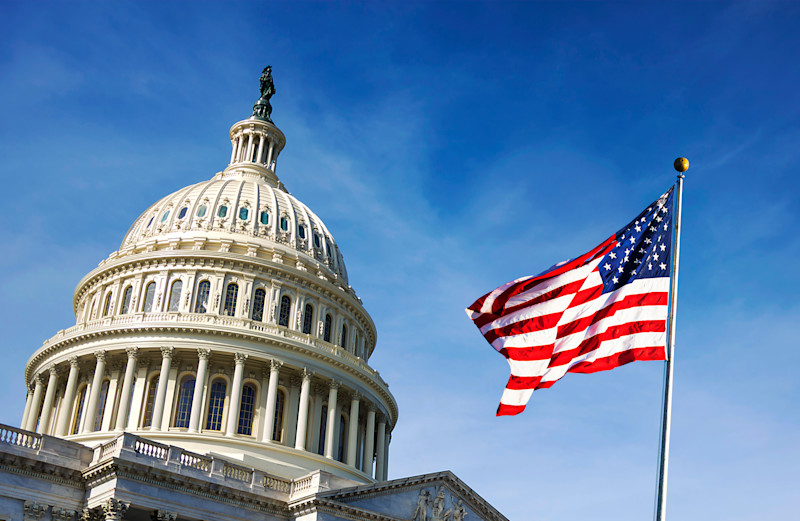Plenty is happening in the nation’s capital on the domestic and international fronts. Of course, that’s always the case in election years with lawmakers jockeying for voters’ attention, but the war in Ukraine adds new urgency to many initiatives.
FY22 Appropriations
The White House and Capitol Hill are focused on supporting Ukraine and the Ukrainian people in the face of Russia’s invasion. Congress added $13.6 billion in humanitarian aid and security assistance to the $1.5 trillion omnibus spending package that funds the government through the current fiscal year (ending Sept. 30). The 2,000-plus page, bipartisan compromise contains $730 billion in non-defense spending, a 6.7% increase over FY 2021 appropriations, and $782 billion in defense spending, a 5.6% jump from the previous fiscal year.
New “Buy American” Rule
Earlier this month, the Biden administration announced new content rules under the Buy American Act that require goods purchased with taxpayer money to contain 75% U.S.-made content, up from the current 55% requirement. That process will begin in 2022, with the rule shifting to 60% in October and 75% by 2029. In addition, there will be enhanced price preferences for designated critical products and components in strategic industries.
USICA/COMPETES
In his state of the union address, President Biden again called on Congress to send the China competitiveness/innovation bill to his desk for signature. He was referring to the U.S. Innovation and Competitiveness Act (USICA), which passed the Senate in June, and its companion bill in the House, the America COMPETES Act.
There are significant differences between the two bills that must be ironed out in conference to secure enough votes to pass each chamber and reach the president’s desk for signature. The most notable is the price tag. USICA, which passed the Senate in June on a bipartisan vote, contains $204.8 billion in new program authorizations. The House costs nearly double that amount, $392.4 billion, and was approved along party lines. COMPETES invests heavily in the Commerce and Energy departments. The House bill also includes several extraneous provisions, such as a union card check, which would make votes to unionize public rather than private.
The main bipartisan component of the bills is where they are identical. Both include $52.7 billion to increase semiconductor chip production in the United States – the only direct funding in either bill. Both bills also invest about $80 billion in the National Science Foundation to boost critical and emerging technologies research.
AMT has not taken a position on either bill but supports a targeted approach to boosting competitiveness through R&D and the commercialization of emerging manufacturing technologies.
Biden Plan To Boost Manufacturing and Secure Critical Supply Chains in 2022
Last year, the president issued an executive order (EO) on a whole-of-government approach to identifying vulnerabilities in critical supply chains. On the first anniversary of the EO, the White House released industrial base reports from seven federal agencies. The announcement also contains descriptions of several initiatives already underway or that have been proposed to enhance competitiveness and national security.
As always, your questions and comments are welcome. Write me at athomas@AMTonline.org.






